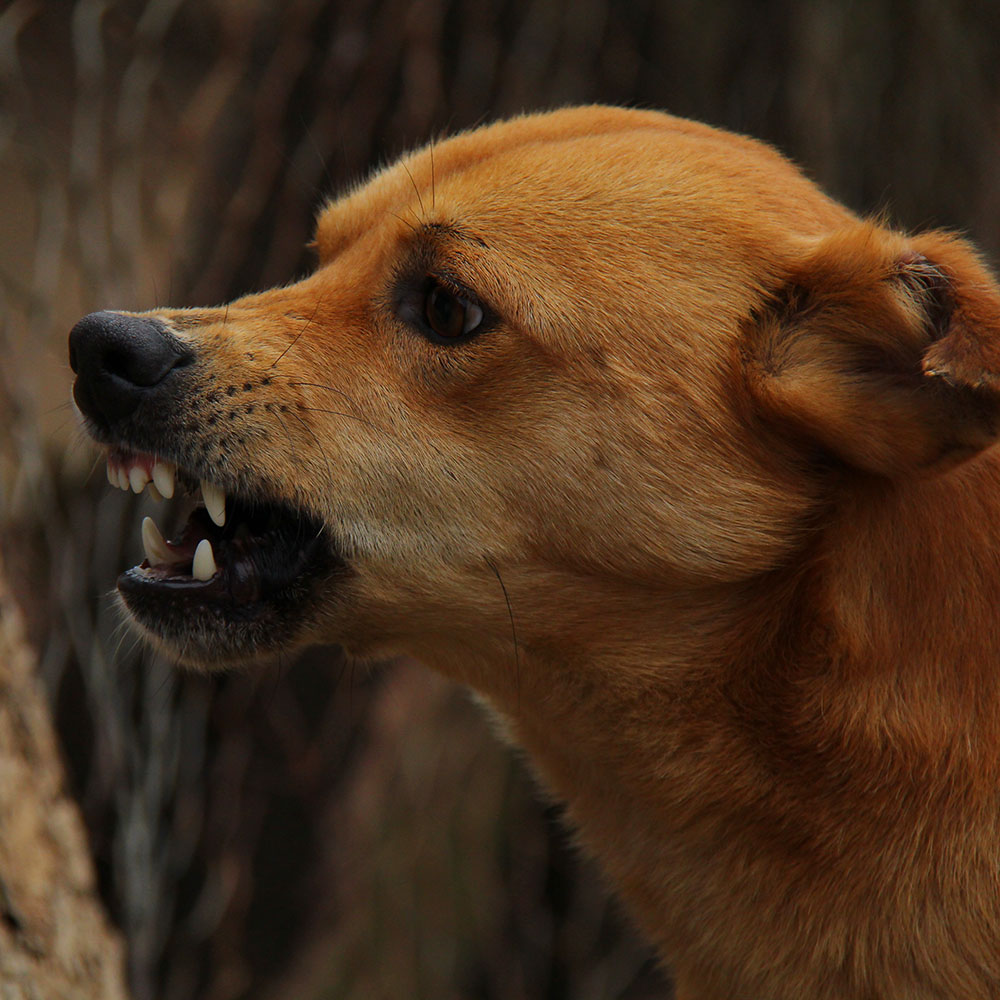

Once you have identified what (or who!) is causing your dog to act aggressively, try to ensure that your dog is able to avoid it as much as possible. This will involve carefully managing your and your dog's environment for a while until you can get an appointment with a behaviourist.
- Plan walks for times of day or areas where you can easily avoid your dog’s triggers – for example, stick to open spaces where you can see other dogs approach and will have plenty of time to move away so your dog does not have to react aggressively to keep another dog away.
- If aggression is occurring in the home, ensure the dog can retreat away from the trigger of its aggression and always ensure family members are kept safe by teaching everyone how to avoid triggering the aggression, or by containing your dog in a separate room until you can get advice from a behaviourist.
Never, ever, punish a dog for behaviours such as growling – as your dog may simply learn not to growl and may then attack without warning. Use growls as a source of information as to what is making them uncomfortable and respect this until you can start behaviour work to teach the dog a more appropriate way of reacting.
